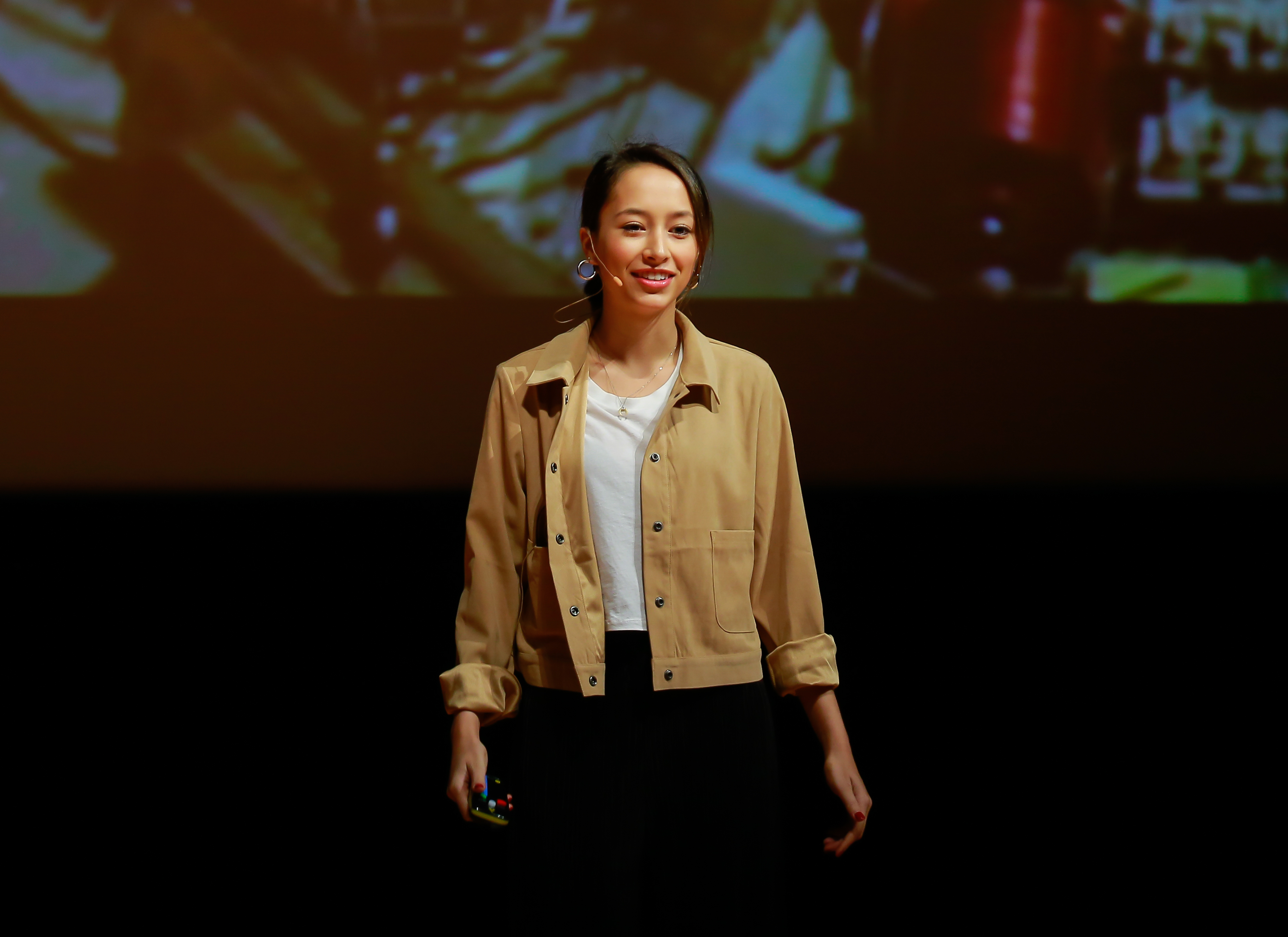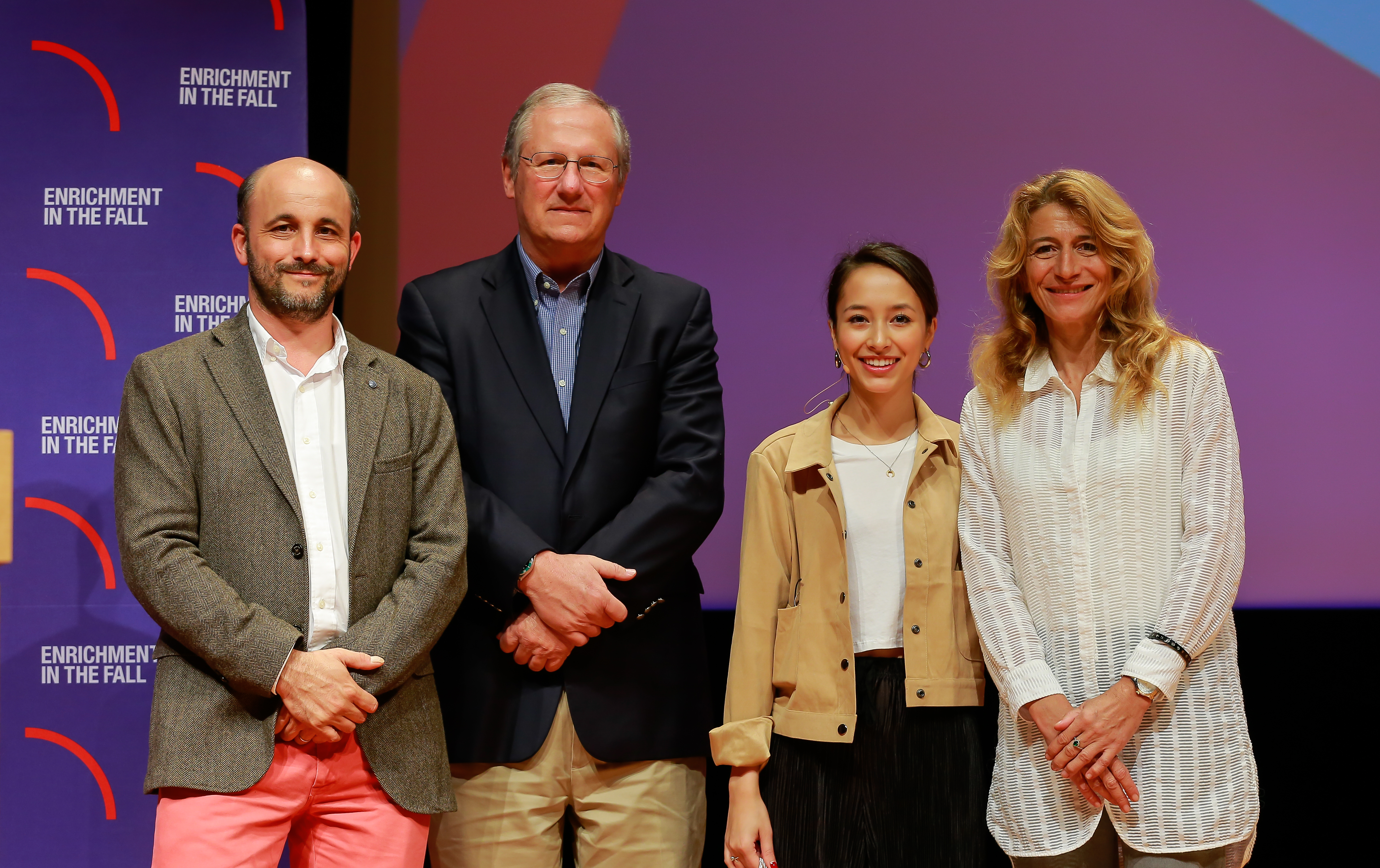Ann Makosinski and the power of STEAM

Ann Makosinski, Canadian inventor, spoke to the KAUST community about innovating to solve problems at her recent Enrichment in the Fall keynote lecture. Photo by Asharaf Kannearil.
Ann Makosinski, a young Canadian inventor, has captured the attention of Google, Forbes (30 Under 30) and Time Magazine for ingeniously harvesting human thermal energy to generate light. In her teens, she created a device called the “hollow flashlight,” which uses Peltier tiles to transform the heat from the palm of the hand into a battery-free source of energy. The light beam that emanates from the device can typically last 20 minutes once produced.
“I wasn’t given many toys as a kid. My first toy was actually a box of transistors,” said the now 20-year-old third year undergraduate student at the University of British-Columbia during her recent Enrichment in the Fall keynote. She first started experimenting with Peltier tiles as part of a seventh grade science project. Her idea came about when she learned that a friend from her mother's native village in the Philippines was failing in school because her family could not afford the electricity to allow her to study at night.
Makosinski was inspired to research an alternate energy source that could be used sustainably by people around the world with limited resources. Peltier tiles provided a solution because they can produce energy when heated on one side and cooled on the other. The LED flashlight uses the resulting thermoelectric effect to operate without batteries or kinetic energy.
Innovating to solve problems
"Just look around you and find a problem. When you find something that you want to fix and it has a personal connection to you, it makes you much more motivated to actually work on it," she said.
Makosinski added that it's important to define how the new solution will differ from current solutions out there. Everyone's creative process is a bit different, so she also advised the audience to be patient and open to a lengthy trial-and-error process.
“Never stop learning. Eighty percent of learning happens outside of the classroom," she said. "Students need to learn all the time."
One of the ways she suggested that people do that is to "put down our mobile phones for at least half an hour per day to discover and explore internal interests."
Why STEAM matters
As part of her advice to to develop fruitful interests and projects, Makosinski shared her strong belief that “it’s important to have a balance of science and art to be successful.” She calls it STEAM: Science, Technology, Engineering, Art and Mathematics. A large slide during her keynote mentioned that art plus science equals progress.
“Perhaps we should be bringing arts and design into science and creating STEAM. If you think about it, a lot of the great scientists were also great artists," she said, adding that Albert Einstein—apart from being a great mathematician—was also a talented violinist. In fact, Einstein considered Mozart to be a kind of musical physicist. Similarly, the legendary scientist and inventor Leonardo Da Vinci was also a prolific visual artist.
Makosinski practices this duality in her own life through exploring her creative side as an English literature student while pursuing her passion for science through the development and patenting of her inventions. Her latest creation is the eDrink, which uses the heat from a coffee mug to charge a phone.
"Just because you’re in college doesn’t mean you can’t start working on your career outside of school. Being in college doesn’t define you just as a student. You can do so much more with your time,” she said.

(Left to right) Gilles Lubineau, Enrichment Chair; James Calvin, Vice President for Academic Affairs; Ann Makosinski and Marie-Laure Boulot, Manager of Enrichment Programs. Photos by Asharaf Kannearil.
"KAUST has mind-blowing facilities, so take advantage of your experience here to explore your creativity through science," Makosinski said, concluding her keynote.
By Meres J. Weche, KAUST News

